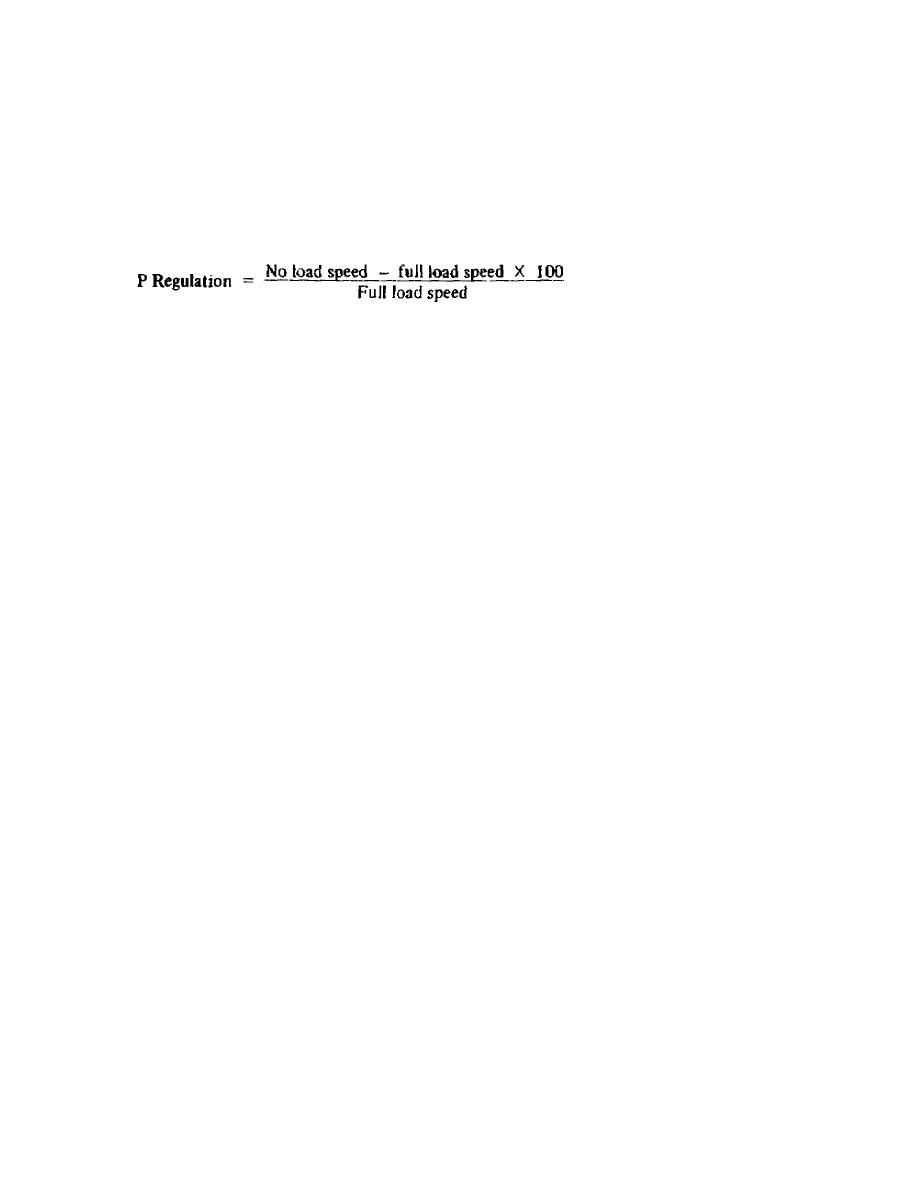
MM0704, Lesson 3
Speed Regulation. Speed regulation concerns change in speed with change in applied load torque, other conditions
remaining constant. Such changes in speed, as occur under these conditions, are due to inherent properties of the motor
and should not be confused with speed changes effected through manipulation of rheostats or other speed control
devices.
The speed regulation of a motor is generally understood to mean the change in speed with changes in load. It is usually
expressed as a percentage, as in the following equation.
Reversing the Direction of Rotation. The direction of rotation of a motor can be reversed by changing the direction
of current flow in either the field or armature, but not in both. Reversing the direction of the magnetic field and also
reversing the direction of current in the armature would leave the direction of the torque unchanged. For this reason, a
DC motor will run on alternating current.
The universal motors used on many household appliances, which will run on either DC or AC, are simply small DC
(generally series) motors. It is not a good idea to connect a DC motor to an AC source and vice versa.
Motor Starters. The armature current of a motor, which is comparatively small at its normal running speed, is very
much larger as the motor is starting and picking up speed. If the armature coils were wound with large enough wire to
safely carry the heavy starting current, the armature would have to be much larger and heavier. This would reduce the
efficiency of the motor. Actually, motor designers select the gage of wire to suit the small currents which flow in the
armature when the motor is running at its normal speed. A motor starter protects the armature coils from damage while
the motor is gaining speed.
The motor starter is a variable resistance, connected in series with the armature. It limits the flow of current through
the armature when the armature is running slowly. The motor is switched on with the maximum resistance in the
circuit. As the armature speeds up, the starter handle moves a little at a time cutting out some resistance at each step.
Finally, all the resistance is removed and the motor has reached its running speed without damage.
AC GENERATORS AND MOTORS
Generators
AC generators are classified according to what revolves, the armature or the field. They are also classified as to the
number of phases of current used; single and multiple.
Revolving-armature. In a revolving-armature AC generator, the stator provides a stationary electromagnetic field.
The rotor, acting as the armature, revolves in the field, cuts the lines of force, and produces the desired output voltage.
In this generator, the armature output is taken through sliprings and thus retains its alternating characteristic.
64


 Previous Page
Previous Page
